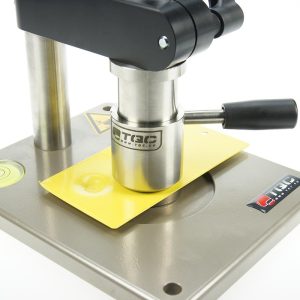Test method, procedure and application of impact resistance of paint film
As an important surface coating, the coating is designed to protect the base material from external environmental and mechanical damage. In practical applications, the film must be able to withstand various mechanical shocks without cracking or falling off. This ability is known as impact resistance, which is one of the key properties of the film and directly reflects the flexibility of the film and the adhesion to the substrate.
Test method, procedure and application of impact resistance of paint film
1. The importance of impact resistance
Impact resistance is the ability of the film to rapidly deform without cracking or falling off when subjected to external impact or mechanical action. This performance is very important, because in actual use, the film is often subject to various shocks, such as the impact of objects, vibration, vibration, etc. If the film lacks sufficient impact resistance, it is easy to crack, foam, fall off and other problems, resulting in damage to the film, and then affect the protection and decorative effect of the substrate.
2. Test method of impact resistance
In order to evaluate the impact resistance of the film, the heavy weight impact test method is usually used. This test is done by dropping a weight of a certain mass free, and then recording the maximum impact height that the film can withstand without damage. In accordance with the provisions of GB/T 1732-93 “Paint film impact resistance test Method”, the specific operation steps are as follows:
Place the test plate flat with the film facing up on the iron table of the impact tester.
The weight is fixed at a certain height by a control device to control the energy of the impact.
Press the control button, the weight falls freely on the punch, impacting the coating template.
Remove the test plate and record the maximum height of the film after the weight is dropped.
Check whether the test plate has cracks, wrinkles or peeling phenomenon.
Test results are usually expressed in centimeters (cm) or Newton · centimeters (N·cm). The higher the height, the better the impact resistance of the film.

Test method, procedure and application of impact resistance of paint film
3. Application field
The impact resistance of the film is of critical importance in various applications. The following are some typical application areas for impact resistance:
Automotive industry – Automotive coatings require excellent impact resistance to protect the body from collisions and scratches. The film must be able to withstand various impacts on the road while maintaining its appearance.
Building engineering – The coating of the exterior walls of buildings needs to have a certain impact resistance to resist the impact of wind and rain, raindrop impact and other external factors on its surface.
Electronic devices – The coating on the surface of electronic products must be able to withstand the impact that can occur in everyday use by users, such as mobile phones, tablets and laptops.
Industrial equipment – The external coating of industrial equipment needs to withstand the shocks that may occur in the production environment to ensure the long-term reliability of the equipment.
Aerospace – In the aerospace sector, the coating must be able to resist the impact that may be encountered during high-speed flight, while protecting the external surface of the aircraft.
In SUMMARY:
Impact resistance is one of the key properties of the film, which is directly related to the flexibility and adhesion of the film. Through the heavy weight impact test, the impact resistance of the film can be assessed to ensure that it can withstand various mechanical shocks in actual use without damage. In different application fields, the impact resistance of the film is of great significance, it is an integral part of the protection and decorative function of the film.
